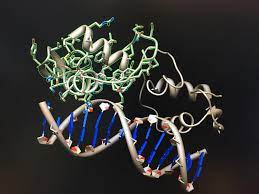🧬Analysis of the SARS-CoV-2 Genome Using NCBI and UCSC Genome browser
- 1 min
During the 10-day Training in Bioinformatics workshop, I gained hands-on experience in using a variety of bioinformatics tools to analyze the structure of SARS-CoV-2, the virus responsible for COVID-19. Each day included a 2-hour interactive training session conducted on Google Meet/Zoom, which provided a unique and engaging learning experience. The sessions covered a wide range of topics, including the retrieval of FASTA sequences and research articles from databases such as NCBI, PDB, and SWISSPROT. I learned to perform primary and secondary structure analysis, 3D structure visualization, and protein-protein interaction studies. Additionally, I became proficient in using software tools like PROTSCALE, TMHMM, SPDBV, and BLAST, among others. Practical exercises included pairwise and multiple sequence alignment, phylogenetic analysis, and genome analysis using the UCSC Genome Browser, with a special focus on SARS-CoV-2.
Importance: Understanding the structure of SARS-CoV-2 is crucial for several reasons. Structural analysis of viral proteins, such as the spike protein, enables researchers to identify potential drug targets and design effective vaccines. By visualizing the 3D structures of these proteins, scientists can pinpoint regions that are critical for the virus’s ability to infect host cells, as well as those that might be vulnerable to neutralizing antibodies.
Furthermore, structural analysis aids in the study of viral mutations and their impact on the virus’s infectivity and resistance to treatments. During the workshop, I utilized tools like Phyre2 and InterProScan to predict protein functions and analyze mutations, providing insights into the virus’s behavior and evolution.
The comprehensive training and hands-on exercises equipped me with the skills to independently analyze complex biological data and contribute effectively to bioinformatics research. On successful completion of the course, I was awarded a participation certificate, which acknowledges my proficiency in bioinformatics tools and techniques. This knowledge not only enhances my understanding of viral pathogens but also prepares me to contribute to ongoing efforts in combating the COVID-19 pandemic and future infectious disease outbreaks.